In the beginning...
At the heart of the Infinite Cosmos is an opening, a doorway of sorts, a passage through the fabric that separates the planes of existence. Through that door, on the deepest of those planes, the Soraline, triplet sisters, were born of darkness. While their experiences in the deepest void have never been recorded or told, the prophets of the Soraline were imbued with their hurt, their agony, their pain. Within their own void they experienced hardship that we may never comprehend, but they found the ability to escape in their dreams. Despite knowing nothing but darkness, they imagined the beauty that could be. They dreamed of colors, of shapes, of matter and form, and to ease their loneliness, of consciousness beyond their own. Through the strength of their collective will and by the simple belief that it could be, they manifested it, because what can truly exist before it is conceived? Together, the sisters created a new plane of existence, forcing open the doorway. They fled the unyielding darkness and left to create the universe of their dreams.
Like artists with a blank canvas, they painted this plane into tangible existence. They created the foundational structures of the matter and the elements that fused together to create the substance of that matter. Matter attracted to like matter, forming the stars that burned brightly, sending their light into all the corners of universe driving out the darkness. From this simple act, the Soraline created the first two aspects of their infant universe. These aspect would become the components of all universal material, held in a balance that would create the fundamental laws that governed the universe. Now, darkness, the primal aspect had gained an opposite— the light. It was then that the Soraline realized that the universe depended upon the balance of opposites. As with darkness and light, one can’t exist without the other, for how can something exist if it can’t be defined? Before there was light, how could it be conceived or defined as the absence of light?
As stars blossomed throughout the Infinite Cosmos, and their light spread, so to did the particles that composed them. Nothing is made to last forever, even in the Infinite. As stars are born, they live and die. Upon their death, they collapsed in on themselves, shattering under their own weight in the most brilliant of explosions. Matter was flung into the reaches of the Infinite from the resulting force. Stars birthed the elements of matter which scattered and recollected, recycled into new structures, forming solid bodies that were caught in the gravity of other stars. As time progressed, stars gathered entire collections of orbiting bodies, forming solar systems, which became clusters of galactic starbeds that spiraled into complex, beautiful shapes throughout the universe
After eons of birthing and building and burning, the Soraline began to fear their own absolute power in the universe. Still alone in the universe, they dreamed of companions, for what is the point to creating such majestic sights as those found within the universe if no other entities beyond themselves were there to appreciate that beauty as well. That is when they discovered that on the bodies orbiting the stars that new aspects were forming. Unlike light and dark they were tangible— they could be held and heard, not just observed. The stars themselves burned, dancing, roiling plasma that warmed the planets and provided them with light. The solidity of the planets was formed by stardust compressed into sediment and then into stone. Further out, on the edges of the systems, larger planets were composed of solid cores and prismatic, swirling clouds of vapor. Ice particles drifted in the space between these bodies, collecting on the surface of the planets, and when the planets were close enough to the sun, they would melt into a clear liquid. It was from these that the Soraline conceived of the four Tangible Aspects— sediment, air, water, and fire. It was from these four aspects that they materialized the first consciousness and life beyond their own. For each aspect they imagined a living, breathing embodiment. These entities became known as the Paragons.
Within these paragons, the Soraline imbued the seeds of all life— the same energy they had used to create the entities. The paragons set to work creating the proper conditions for life to exist on a planet. The Paragon of Sediment, Verena, created cores at the center of each planet made from various elements, and the Paragon of Fire, Gavril, set them ablaze to create the heat needed to nurture primordial life. Next, Verena cut deep channels into the land so that the Paragon of Water, Maris, could fill them with the nourishing liquid to host this burgeoning life. Finally, the Paragon of Air, Arendi, created a protective shield around the planet and filled the it with gases life could use to respirate, which would help it create the energy it needed to survive and thrive.
Verena sculpted mountains and scraped out plains. Maris sent rain from the sky from clouds moved by Aredni’s winds. Gavril coaxed the molten stone from the core closer to the surface, heat escaping as it broke through the surface of the world, to warm the land and sea. Ever so slowly, life began to gestate and grow in the the water and then across the land. And thus, mortal life came to be in the world.
While the four paragons worked tirelessly to create life to appreciate the beauty of the Infinite Cosmos, the Soraline began to consider the world that these mortal beings would inhabit. The paragons held grand ambitions for their creations, hoping one day to hand the world over to them. They dreamed of a sprawling civilization of mortal beings who would serve as stewards of the world. But, the Soraline again began to worry. They feared that no matter how much light, beauty, and life was in the universe, the mortals would experience the same misery that they had known in the deepest void. The world could not be pure paradise, for no one can appreciate life if the risk of losing it exists. But, neither did they condone the agony without reprieve. They feared a day when mortal life wished to escape into their own plane, yet lack the means to do so, only to fall into deeper despair. Pleasure and misery must exist in equal quantity, balanced just as the Tangible Aspects of the universe.
What were the other aspects of existence that life could not live without? They thought about those that could not be heard, or seen, but neither could truly be touched unless it was felt in within the heart and mind of the mortals. After all, darkness had given way to the light, and life could not have existed without these primary aspects. The Soraline imagined these as entities, and the Paragons of Dark and Light were manifested, the first two Paragons of the Intangible Aspects. Sunil, the Paragon of Light, moved the world closer to the bright blue-white star, and the world was illuminated. To ensure the world did not endure constant light, Rasyl, Paragon of Darkness sent the world spinning, creating the first day and night.
Still, the Soraline feared the world was too perfect. There was too much certainty that the mortals took for granted. Never did they want for anything, or fear that they would suffer. The mortals could not appreciate the security and safety of the world if there was no disruption to its course. The universe was orderly, yet it had been a dream born from a chaotic empty void. These aspects were abstract, hard to define in more ways their thought and word, yet they were at the roots of creation. So, the Soraline imagined the embodiment of such cerebral aspects, and the Paragons of Order and Chaos were manifested.
The four Paragons of the Tangible Aspects agreed that now was the time to bring forth their most incredible life yet— the beings meant to be the stewards of their new world. As the life form closest to the paragons, they shaped them in their image… but each paragon had been derived from a different and contrasting aspect. Which one should they choose? Each of the four imagined a different mortal, fragments of the embodiment from which they were constructed.
Verena imagined a people the color of the rich, fertile soils of her valleys, and built as study as the forests that grew in them. She placed them in the verdant woods, and called her people Jordan.
Arendi imagined a people as pale as the colors of the clouds that formed high in the atmosphere, and as slight as the the breeze on which they moved. He placed them high in the mountains, and called his people Soren.
Gavril imagined a people the golden hues of fire, and as agile as a dancing flame. He placed them in the desert, and called his people Pyran.
Maris was the last, and she wanted her people stand apart from the others. She thought about her aspect— her people could not settle within the water, and would not have the deep connection to their aspect as the others did. So, instead, she thought about the life that dwelled within the water. Lithe, swift creatures made of vibrant colors that contrasted against the murky depths. She imagined her people as prismatic as the fish and coral in the sea. To be born of water and yet live on the land, they would need to be flexible and adaptable as the flow and shape of water. Placing them as close to the water as possible, she put them on the coastlines of the oceans, lakes, rivers, and sea, and called her people Deryn.
Valen, the Paragon of Order, watched this creation from afar, observing as time passed and the mortals began to tame and change their world. Angered at their offense, of ruining what the Paragon’s had built for them to care for, he demanded that their creators punish them for destroying the sanctity of the world. For order to be maintained, there must be rules and expectations. These mortals were creations, not creators. It was not their place to question the will of the paragons by reshaping the world to suit their whims. Stepping up to interject, Avadiel, Paragon of Chaos, reminded Valen that for order to exist, their must be a need. Only a threat to their stability could ensure order. She offered to fix the situation, and began to create distractions to keep the mortals busy. Curiosity could not be explored if the time to think was not given, and thus they would be unable to modify their world. She imagined all sorts of disruptions. She tilted the planet so the wobble in the spin would create season. She sent disaster of every kind— quakes that shook the solid ground, floods of surging water, raging storms of swirling wind, and surges of billowing fire.
And, that is how death entered the world.
When the Soraline realized what had transpired, they stepped in to create the last two aspects that were needed to keep balance in the universe, and Enid and Omri, the Paragons of Life and Death manifested.
Everything that Avadiel tried to distract the mortals only did not to force them to adapt, and in turn, adapt more of the world to try to counteract the dangers and threats of the Paragon of Chaos. It was if they were trying to outsmart her actions before she could even take them. The paragons had created mortals to be stewards of this world, not to take dominion over it, but unless they wanted to intervene and control them directly, as Valen demanded, they had to allow for them to exercise free will, and accept the consequences that came with that. That was the price of creating life— at some point the creator must be willing to walk away and allow their creation to think and act on its own.
To Valen, this was unacceptable. Even though he knew that for order to exist, so to must chaos. To vent his rage about being dismissed by the other paragons, he vowed to show him that he was correct— the mortals needed to be limited, controlled, or they would only destroy themselves and their world. Using the same four aspects to create the mortals, Valen imagined his own beings. They were loyal to the point of dependence. They were beings that relied on instinct rather than logic to solve problems. They would live off what the land gave them rather than change the world to serve their needs. They would live in accordance with the laws and will of the paragons.
But Valen did not have the control of these aspects. He was not as adept at wielding them as those born as their embodiment. His mortals were wicked and warped. They became brutal, savage, aggressive. They did not respect life nor could they conceive of desire and needs beyond their own survival. Worst of all, as a intended insult to the creator paragons, to ensure devotion to him alone, he had imbued the most devout beings with the essence of magic.
The other paragons were outraged by Valen’s actions, and reviled what they called his Forsaken Races, who in their opinion, were little better than monsters. Avadiel argued that this was an act of true chaos, which forced her to attempt to restore balance. So, into the world, Avadiel dispersed the seeds of magic. The mortals who discovered this magic began to praise Avadiel for her blessing.
The other paragons sent their own blessings to the mortals, and they began to serve and worship each paragon for a distinct purpose. They even began to reward the most devout of the mortals just as Valen had done with his beings. Each paragon chose from their most devout, and began speaking directly with them. This was how the first prophets were chosen.
The Soraline noticed how the dynamic between the beings and the paragons had shifted, and feared that as these relationships deepened, so to would the onset friction forming between the paragons. They decreed and end to direct intervention in the mortal world, and took upon themselves to duty of ensuring the course of mortal events. Each paragon would be allowed to choose two representative mortals— a prophet through which they could directly communicate, and a mortal, who the Soraline deemed to be the truest embodiment of their aspect amongst the mortals, that would serve as their proxy in the physical world. This is how the first Sentinels were chosen.
The world turned. The Infinite Cosmos expanded. Society developed and progressed. For every step back the paragons took, the mortals answered with another invention, creation, or adaptation Valen fumed, unable to accept that these mortals should have such will of choice and action. Technology slowly replaced devotion. Mortal began to forget the old rituals. The names of the paragons became little more than legend and myth. It was not until the great rift among the paragons over whether to abandon mortals completely that mortals and paragons would have direct contact again. Not until the Banished Ones— Avadiel, Maris, Gavril, Arendi, Verena, and Sunil, who refused to abandon their creations— fell from the Infinite in a fiery blaze that left a glass crater in the Great Pyran Desert.

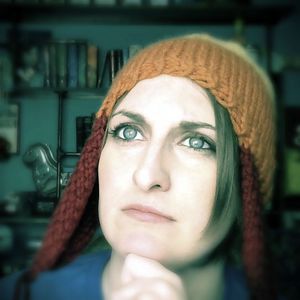
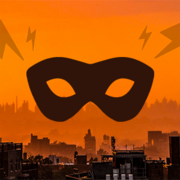
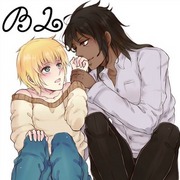
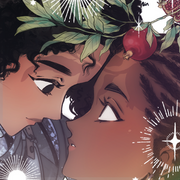


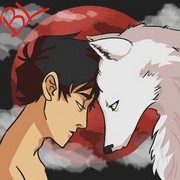

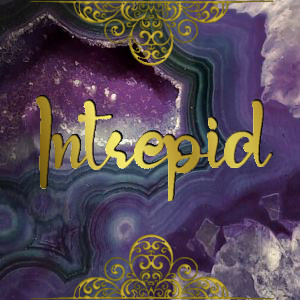
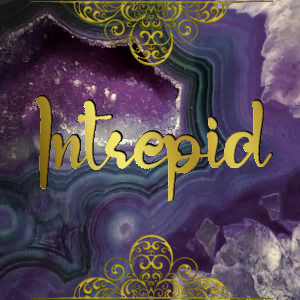
Comments (0)
See all